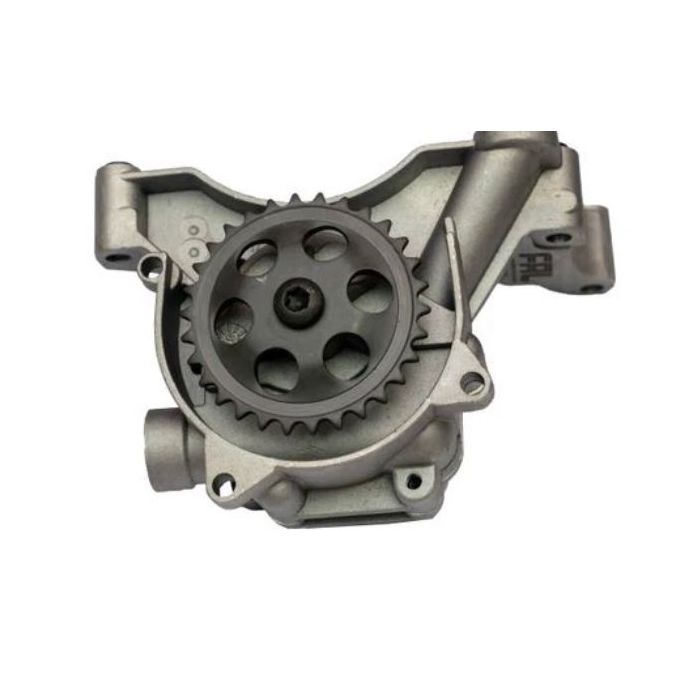Avoid operational issues with a well-tuned clp engine.
Avoid operational issues with a well-tuned clp engine.
Blog Article
Exactly How a Clp Engine Can Improve Effectiveness in Numerous Industries
The arrival of CLP engines notes a considerable change in operational performance throughout different industries, driven by their capability to maximize gas consumption and lessen downtime. Industries such as production and logistics stand to gain substantially from their robust layout and consistent power output, which promise to improve operations and enhance performance. As companies significantly focus on sustainability together with efficiency, the function of CLP engines becomes a lot more essential. What remains to be seen is how these improvements will certainly form the future landscape of industrial procedures and their effect on broader economic fads (clp engine).
Summary of CLP Engines
CLP engines, or Continual Liquid Propellant engines, represent a significant improvement in propulsion innovation, specifically for space applications. These engines use a constant feed system that enables for the sustained expulsion of propellant, leading to enhanced efficiency and performance compared to conventional strong or hybrid propulsion systems. By preserving a consistent circulation of fluid propellant, CLP engines can accomplish a lot more precise thrust control, which is important for maneuvering spacecraft in different objective circumstances.
The style of CLP engines incorporates advanced products and innovative gas monitoring systems. clp engine. This causes decreased weight and increased integrity, crucial factors for long-duration space missions. The constant procedure decreases the risk of burning instability, a common obstacle in standard rocket engines.

Advantages in Production
The production of Continuous Fluid Propellant (CLP) engines offers several remarkable benefits that improve both effectiveness and cost-effectiveness. Among the key advantages is the structured manufacturing procedure, which reduces the complexity connected with traditional propulsion systems. By making use of liquid propellant, producers can achieve greater accuracy in engine efficiency, leading to enhanced energy output and lowered waste.
Furthermore, CLP engines promote a greater level of modularity, permitting for simpler assimilation into different production lines. This versatility can significantly lower preparations and enhance general operational versatility. Making use of CLP technology likewise often tends to reduce the need for extensive upkeep because of less moving parts, which converts into reduced downtime and operational prices.

Applications in Logistics
Leveraging Constant find more Liquid Propellant (CLP) engines in logistics uses considerable advantages in operational performance and dependability. These engines provide a durable option for various transport demands, allowing the seamless motion of items across huge ranges. The integral design of CLP engines permits constant power output, which translates into smoother and a lot more predictable transport timetables.
Among the key applications of CLP engines in logistics remains in sturdy products transportation, where they can drive both ground and airborne automobiles. Their capacity to maintain high efficiency under varying lots problems ensures that distribution timelines are satisfied, thereby boosting consumer contentment. Additionally, CLP engines can be integrated into automated logistics systems, assisting in real-time tracking and optimizing path preparation.
In addition, the toughness of CLP engines lowers upkeep downtime, permitting logistics business to maximize their operational abilities. This is specifically beneficial in warehousing operations, where performance in dealing with and delivering goods is critical. As logistics remains to develop, the combination of CLP engines stands for a forward-thinking approach that not just improves efficiency however also supports the market's growing needs for reliability and speed.
Influence On Energy Effectiveness
How do Continuous Fluid Propellant (CLP) engines enhance energy efficiency in transport? CLP engines use a constant circulation of fluid gas, maximizing combustion procedures and keeping a steady thrust output. This layout lessens power losses connected with typical combustion engines, where gas shipment can differ and result in inefficiencies.
The continual procedure of CLP engines enables for a much more effective thermal cycle, resulting in greater specific impulse contrasted to conventional engines. clp engine. This converts to decreased gas usage for the same quantity of work done, substantially lowering functional prices throughout various transportation industries, consisting of aeronautics and maritime industries
Additionally, the capability of CLP engines to preserve optimum efficiency under differing load problems decreases the demand for frequent acceleration and deceleration, additionally improving gas performance. Boosted power efficiency not just adds to set you back financial savings yet additionally results in lower greenhouse gas emissions, aligning with global sustainability goals.
Future Trends and Innovations
Emerging advancements in Constant Liquid Propellant (CLP) engine modern technology guarantee to change the landscape of transportation effectiveness and sustainability. As sectors pivot toward greener alternatives, CLP engines stand at the leading edge, incorporating ingenious materials and style methodologies that enhance performance while reducing find more info environmental impact.
Among the most appealing fads is the fostering of crossbreed systems that integrate CLP engines with renewable resource resources. This harmony can enhance gas intake and reduce emissions, aligning with international sustainability objectives. Additionally, improvements in computational fluid dynamics (CFD) are promoting the layout of more aerodynamically effective engines, resulting in reduced drag and enhanced fuel performance.
Furthermore, the YOURURL.com development of clever monitoring systems is established to improve operational efficiencies. These systems leverage information analytics and IoT technology to enhance engine efficiency in real-time, making sure that the engines operate within their most effective criteria.
As study remains to discover alternative propellant solutions-- such as biofuels and artificial fuels-- the future of CLP engines looks appealing. By harnessing these advancements, industries can not just improve their efficiency however likewise contribute significantly to a cleaner, extra lasting future in transport.
Conclusion
In conclusion, CLP engines stand for a considerable improvement in performance across several sectors. The combination of sophisticated materials and fewer relocating components reduces upkeep requirements, while alignment with sustainability objectives positions CLP engines as a crucial technology for the future.
Report this page